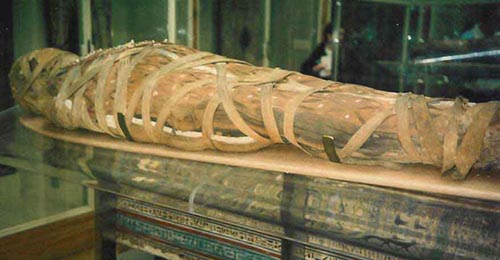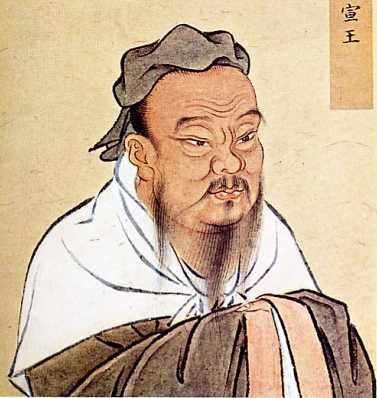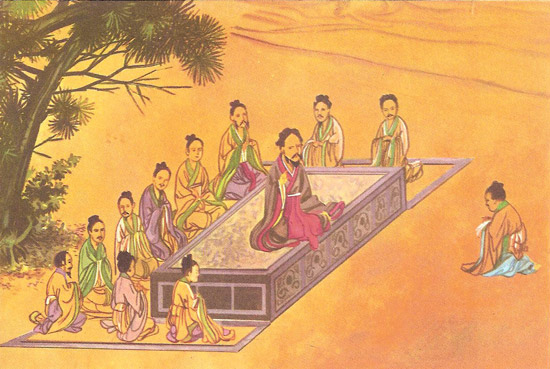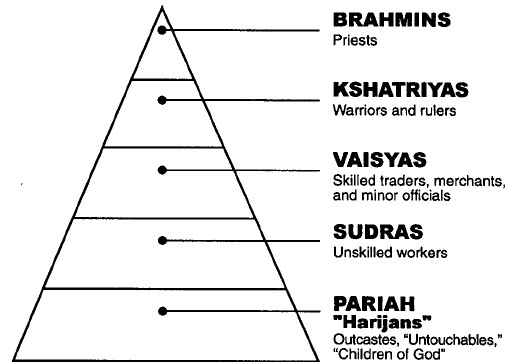
Confucius: Was an influential Chinese philosopher, teacher and political figure known for his popular aphorisms and for his models of social interaction.
Confucianism, a religion of optimistic humanism, has had a monumental impact upon the life, social structure, and political philosophy of China. The founding of the religion goes back to one man, known as Confucius, born 500 years before Christ. Confucianism deals primarily with moral conduct and ethical living and is often categorized as an ethical system, rather than a religion. It emphasizes the earthly, not the heavenly.

Gautama Buddha, also known as Siddhārtha Gautama, Shakyamuni, or simply the Buddha, was a sage on whose teachings Buddhism was founded.
Buddhism: Respect for others properties and all life
Han Fei, also known as Han Feizi, was a Chinese philosopher who, along with Li Si, Gongsun Yang, Shen Dao and Shen Buhai, developed the doctrine of Legalism.
Legalism: All power to legal ruler.

Laozi was a philosopher and poet of ancient China. He is best known as the reputed author of the Tao Te Ching and the founder of philosophical Taoism, but he is also revered as a deity in religious Taoism and traditional Chinese religions.
Daoism: Keeping your life simple with nature.
What is the difference between religion and philosophy?
Religion is a belief, it has set of code of conduct, principle, ethics, and morals to follow in ones life. Philosophy on the other hand speaks about realization of the supreme truth. It deals with the topic of life after death. It speaks about the existence of the should and life after death. Philosophy establishes the divine nature of man. It teaches the absolute truth that each soul is potentially divine.







.JPG)


.JPG)
